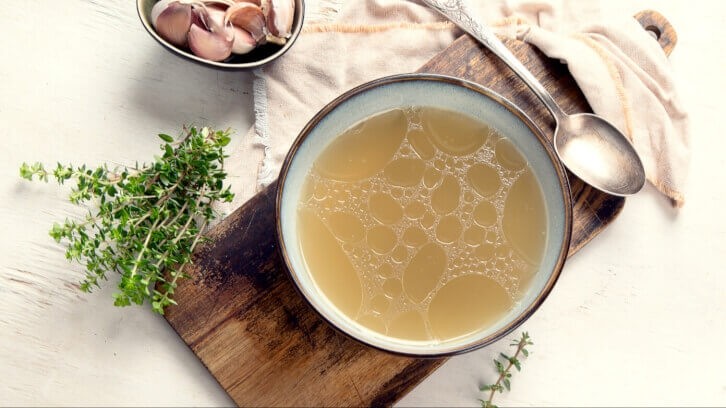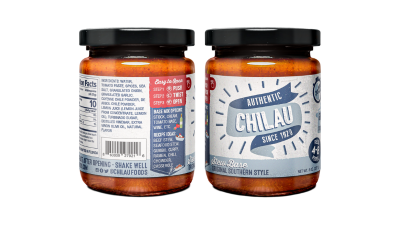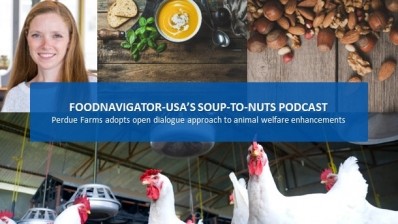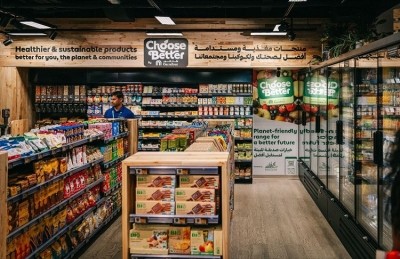No bones about it, Kettle & Fire’s broth promotes regenerative farming for meat industry

During the pop-up, Kettle & Fire invited consumers to learn more about the brand’s commitment towards additive-free, shelf-stable regenerative bone broth from sourcing bones exclusively from regenerative farms.
Within its current lineup of beef, chicken and vegetable broths, the company currently offers regenerative beef and chicken bone broths. Its portfolio of broths and soups feature a variety of flavors, from Turmeric Ginger Chicken Bone Broth and Chicken & Ancient Grain Hearty Soup to Chipotle Beef Bone Broth, among others.
For its regenerative broth, the company relies on Certified Humane and/or Global Animal Partnership (GAP) certification to ensure its suppliers from New Zealand, Australia and the US comply with regenerative farming practices, rotational grazing and animal welfare.
“Every year the farms are audited where they are required to improve upon different metrics from the previous year. As mentioned, these include but are not limited to ground cover, plant diversity, soil health, water cycle, carbon capture and the overall ecological health of the farm/ranches,” Belinsky elaborated.
Regenerative agriculture, a possible solution to modernize the meat industry
Compared to plant-based foods, animal-based foods emit roughly twice as much global greenhouse gas, according to data from Nature Food, highlighting the call for a modernized meat production system.
While alternative proteins continue to make strides in scalability, taste, texture and nutrition to feed an impending population of 10bn by 2050, the meat industry is arguably behind in reducing its environmental impact.
Certifications like Regenerative Organic Certified incorporates the organic standards, while implementing regenerative farming principles, including cover crops, crop rotation, conservation tillage, pesticide and fertilization reduction and/or elimination, grazing animals over the course of their lifetime rather than using feedlots and ensuring fair and ethical wage and treatment of farmers.
According to the Good Food Institute, plant-based meat and grass-fed beef (including regenerative beef) comprise less than 1% of the total meat market, despite growing demand for meat globally.
“It’s extremely challenging to certify regenerative farms,” Belinsky said. “The process requires extensive testing of the soil, as well as validation of land biodiversity and overall ecosystem functionality and health.”
With the global meat demand rising, scaling regenerative meat production requires both significant investment towards certification practices and awareness to shift the industry towards a sustainable future. Similarly, the seafood industry, which is seeing more certifications from the Aquaculture Stewardship Council for farm-raised seafood and the Marine Stewardship Council for wild-caught seafood, is experiencing an uphill climb to meet requirements set by these organizations that adhere to water conservation, the health of fish species and social compliances like fair and equitable labor.
Certification costs are typically the main deterrent for some farmers, Belinsky added.
“Everything that is done on the farm has compounding or cascading effects and requires the farmer to be completely in tune with their land. Annual fees and hours are put towards achieving and maintaining these certifications and this tends to be a barrier of entry for some farmers,” she said.
With an expected market value of $10.86bn by 2032, the broth market is driven by consumers’ preferences towards improving their health through diet and a growing awareness on social media for its potential benefits.
Kettle & Fire’s business model relies on sourcing its bones from regenerative farms and Belinsky is hopeful that improving consumer awareness on the environmental benefits of sourcing regenerative ingredients will have an impact on “justifying the investments [farmers] are making in regenerative agriculture and encouraging others to do the same.”
Belinsky continued, “One of the biggest gaps we see today is the need to bring awareness to the concept of regenerative agriculture in order to increase supply and demand for both farmers and buyers. The more people understand, the more we hope to help increase the amount of regeneratively sourced ingredients in grocery stores.”
*Editor's Note: An earlier version of this article incorrectly included heirloom chicken bones as part Kettle & Fire's sourcing commitment. This is only for the regenerative beef bones. The company also offers both regenerative chicken and beef bone broths, a correction from an earlier version of the story.





















